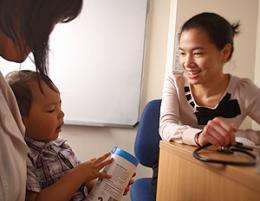The study found significant differences between male and female GPs in terms of who and what they treat.
University of Sydney research has found female GPs see more female patients and younger patients and are more likely to consult on psychosocial issues than their male counterparts.
The research confirms the findings of a two decades old study that found male and female GPs had different general practice characteristics and managed different types of medical conditions, and that many of these differences were inherent to GP gender.
The latest study, published in the Medical Journal of Australia, has found these differences remain, even though the proportion of GPs who are female has doubled.
Using BEACH data (Bettering the Evaluation And Care of Health) the researchers investigated whether the gender specific differences found 20 years ago remain with today's GPs, or if they levelled out with the increased number of female GPs in the workforce.
The research found that, compared with male GPs, current practicing female GPs are younger and less likely to work as a solo GP. They also see far more female patients and younger patients than male GPs do, and their patients present with more issues and different types of problems, Christopher Harrison from the University of Sydney's BEACH study said.
"After taking these differences into account, female GPs remain more likely to manage psychosocial, female-specific or problems of a general nature," Mr. Harrison said.
"Moving beyond the previous study, we also found differences in management practices that were inherent to GP gender, with female GPs more often using clinical treatments, pathology tests, referrals and imaging.
"This study shows that, other things being equal, female and male GPs manage different problems and use different management methods - just because of their gender.
"It seems that the Australian general practice workforce is split by GP gender into groups practicing different styles of medicine.
"Further research into how often male and female GPs see their patients in a year is needed to examine whether the higher use of resources per female-GP encounter (through additional tests and referrals) translates to higher or lower resource use overall."
More information: www.mja.com.au/
Provided by University of Sydney


















